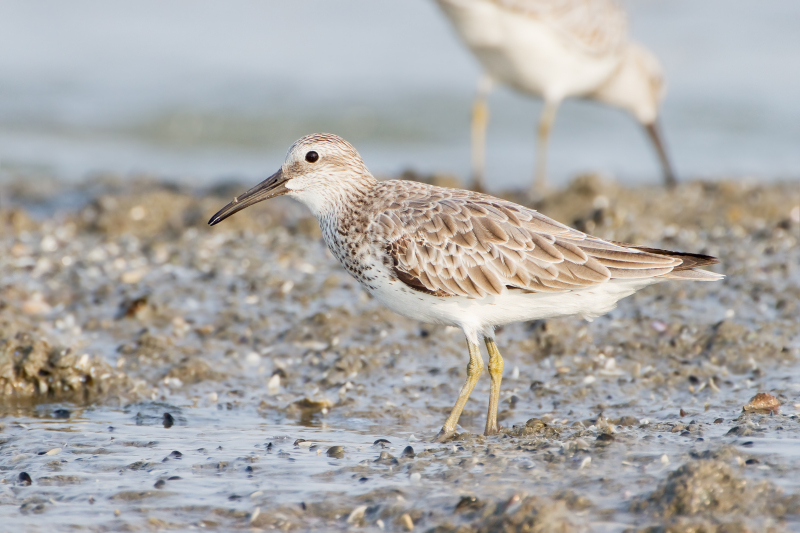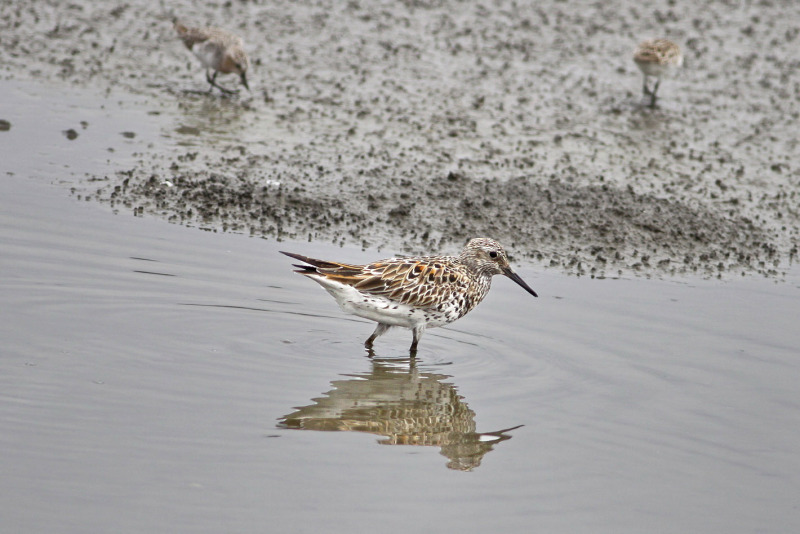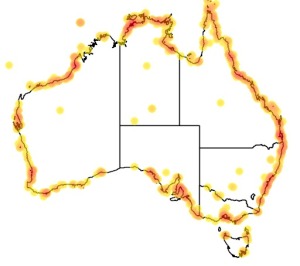�
�
�
���
Calidris (Calidris) tenuirostris
Great Knot
Kingdom
Animalia
Phylum
Chordata
Class
Aves
Order
Charadriiformes
Family
Scolopacidae
Genus
Calidris
Species
Calidris (Calidris) tenuirostris
Status
least concern
Colours
Distinguishing features
This species has short dark legs and a medium-length thin dark bill. Breeding adults have mottled greyish upperparts with some rufous feathering. The face, throat and breast are heavily spotted black, and there are also some streaks on the rear belly. In winter the plumage becomes uniformly pale grey above. (Wikipedia)
Size
- Up to 30 cm (Length of specimen)
Wingspan
- Up to 60 cm and averaging 58 cm
Synonyms
Similar taxa
-
Animalia:
Red Knot (species: Calidris (Calidris) canutus)
The Great Knot is closely related to the more widespread Red Knot. In breeding plumage, the latter has a distinctive red face, throat and breast. In other plumages, the Great Knot can be identified by its larger size, longer bill, deeper chest, and the more streaked upperparts. (Wikipedia)
Distribution
Distribution and habitat preferences
Their breeding habitat is tundra in northeast Siberia. They nest on the ground laying about four eggs in a ground scrape. They are strongly migratory wintering on coasts in southern Asia through to Australia.(Wikipedia)
Diet
These birds forage on mudflats and beaches, probing or picking up food by sight. They mainly eat molluscs and insects. (Wikipedia)
Web resources
References
- Simpson, K., N. Day and P. Trusler (2004). Field Guide to Birds of Australia: 7th Edition Penguin Group (Australia), Camberwell, Victoria.


